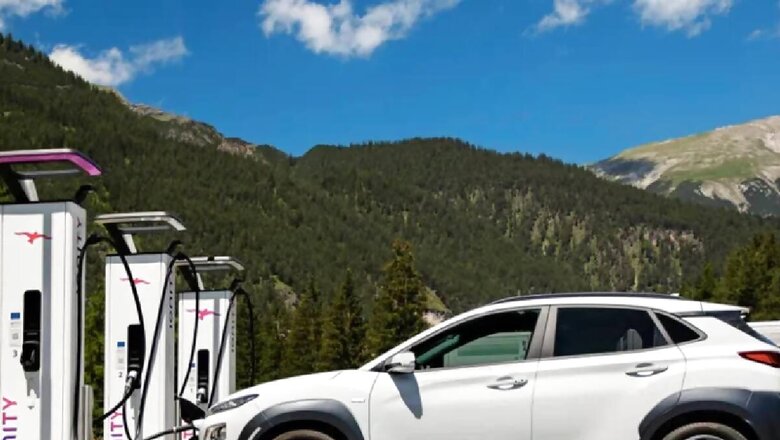
views
In an effort to support the emergence of electric vehicles, the Council of the European Union has passed a new law that mandates the installation of EV charging points along all major transportation routes across the continent.
The fast charging stations will be set up every 60 kilometres, with each of them having the capability to offer a minimum power of 150kW. As per the new regulations, charging stations along the EU’s Trans-European Transport Network (TEN-T) highways must have an overall output capacity of at least 400kW by December 31 in 2025, while one charger must have a capacity of 150kW. The Trans-European Transport Network serves as the main transportation corridor of Europe, connecting the major cities and nodes.
The regulations, however, provided a longer timeline for the installation of EV fast chargers on the comprehensive transportation network that links EU regions to the core network. These charging stations must cover at least 50 percent of the comprehensive roadways by December 31 in 2027 and have a combined output of at least 300kW, while one charging point should have an output capacity of 150kW.
These charging stations will be deployed across all of these routes by the end of 2030. At least two of the charging sites on these highways must be able to produce 150kW of power. The overall output capacity of the charging stations on these roads must be at least 600kW by December 31 in 2035.
Moreover, the regulations mandate that one will be able to make payment of charging fees with cards or contactless devices as it won’t require any additional subscriptions. This will make the job simpler for EV owners to access charging stations on many networks. At each charging station, operators will be required to use electronic displays to show rates, wait times, and the availability of their charging points.
These regulations are a component of the ‘Fit for 55’ package, which is a collection of policies designed to help the EU accomplish its objectives to establish climate neutrality by 2050 by lowering greenhouse gas emissions by 55 percent by 2030 (compared to the levels adjudged in 1990).















Comments
0 comment